
How to Use ESP32-C3-DevKitM-1: Examples, Pinouts, and Specs
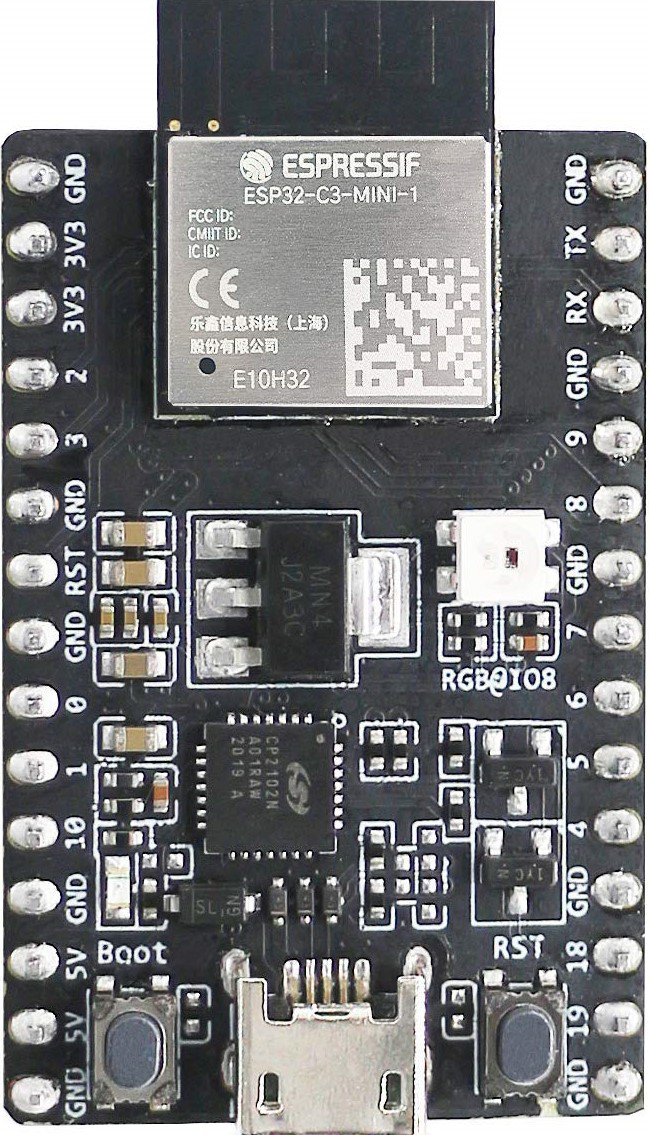
 Design with ESP32-C3-DevKitM-1 in Cirkit Designer
Design with ESP32-C3-DevKitM-1 in Cirkit DesignerIntroduction
The ESP32-C3-DevKitM-1 is a compact development board based on the ESP32-C3 chip, which integrates Wi-Fi and Bluetooth Low Energy (BLE) capabilities. Designed for Internet of Things (IoT) applications, this board is ideal for prototyping and development due to its small form factor, low power consumption, and robust wireless connectivity. It supports multiple programming environments, including Arduino, ESP-IDF, and MicroPython, making it versatile for developers of all skill levels.
Explore Projects Built with ESP32-C3-DevKitM-1
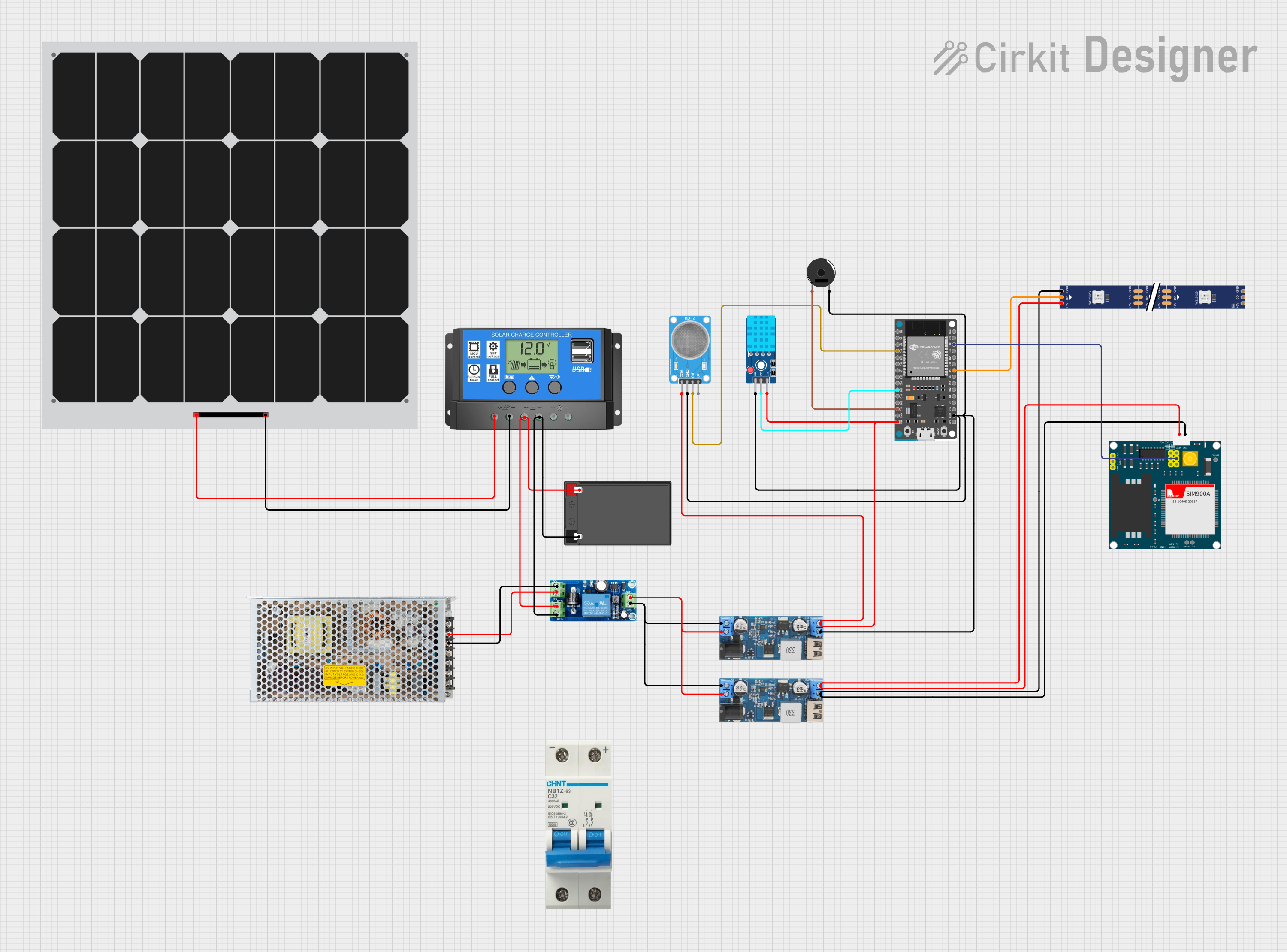
 Open Project in Cirkit Designer
Open Project in Cirkit Designer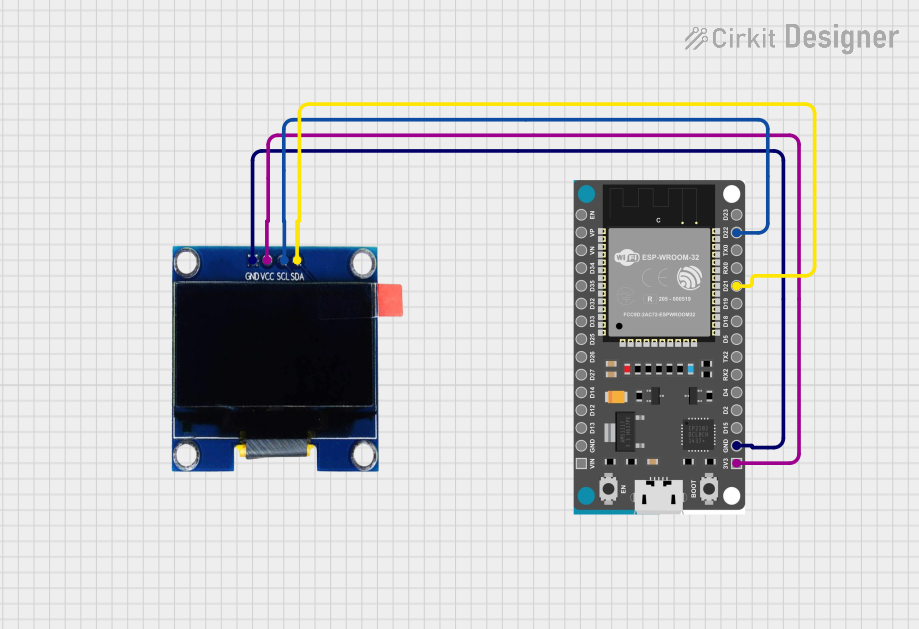
 Open Project in Cirkit Designer
Open Project in Cirkit Designer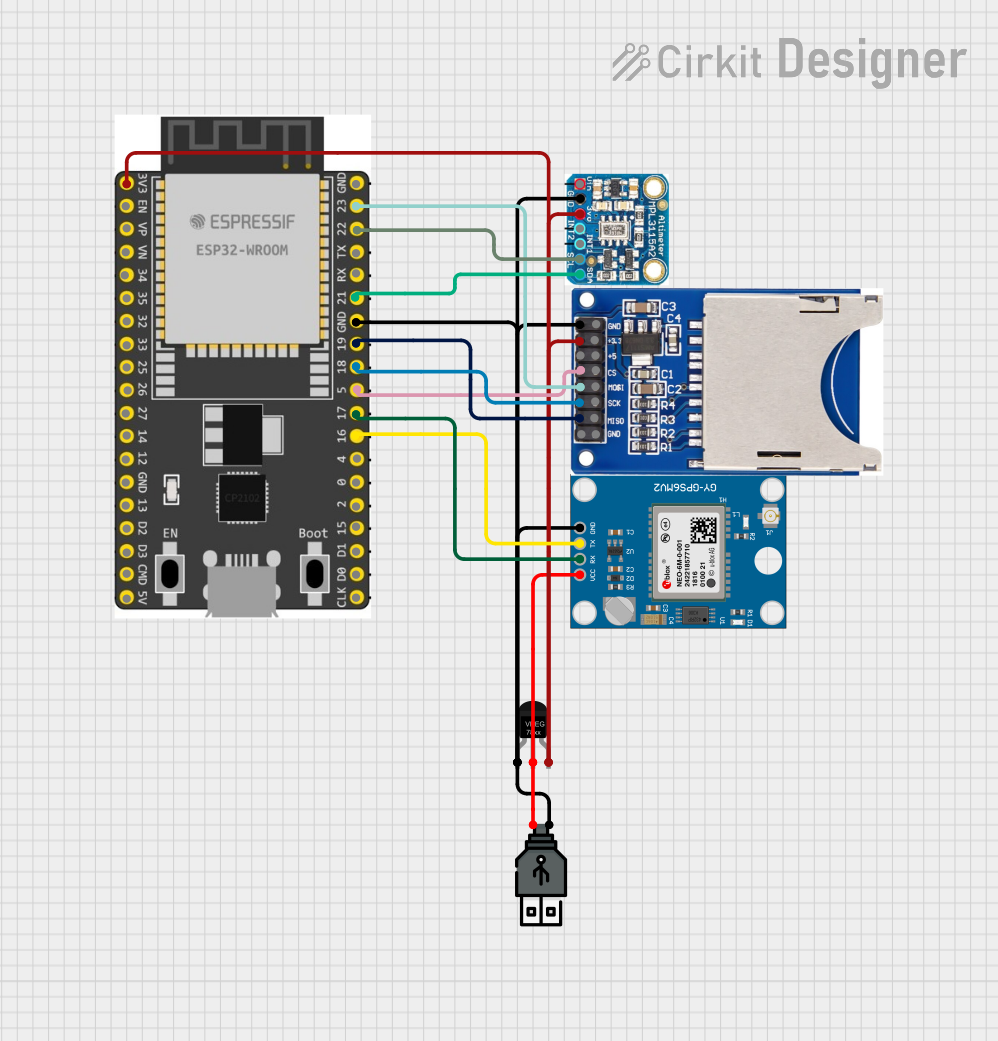
 Open Project in Cirkit Designer
Open Project in Cirkit Designer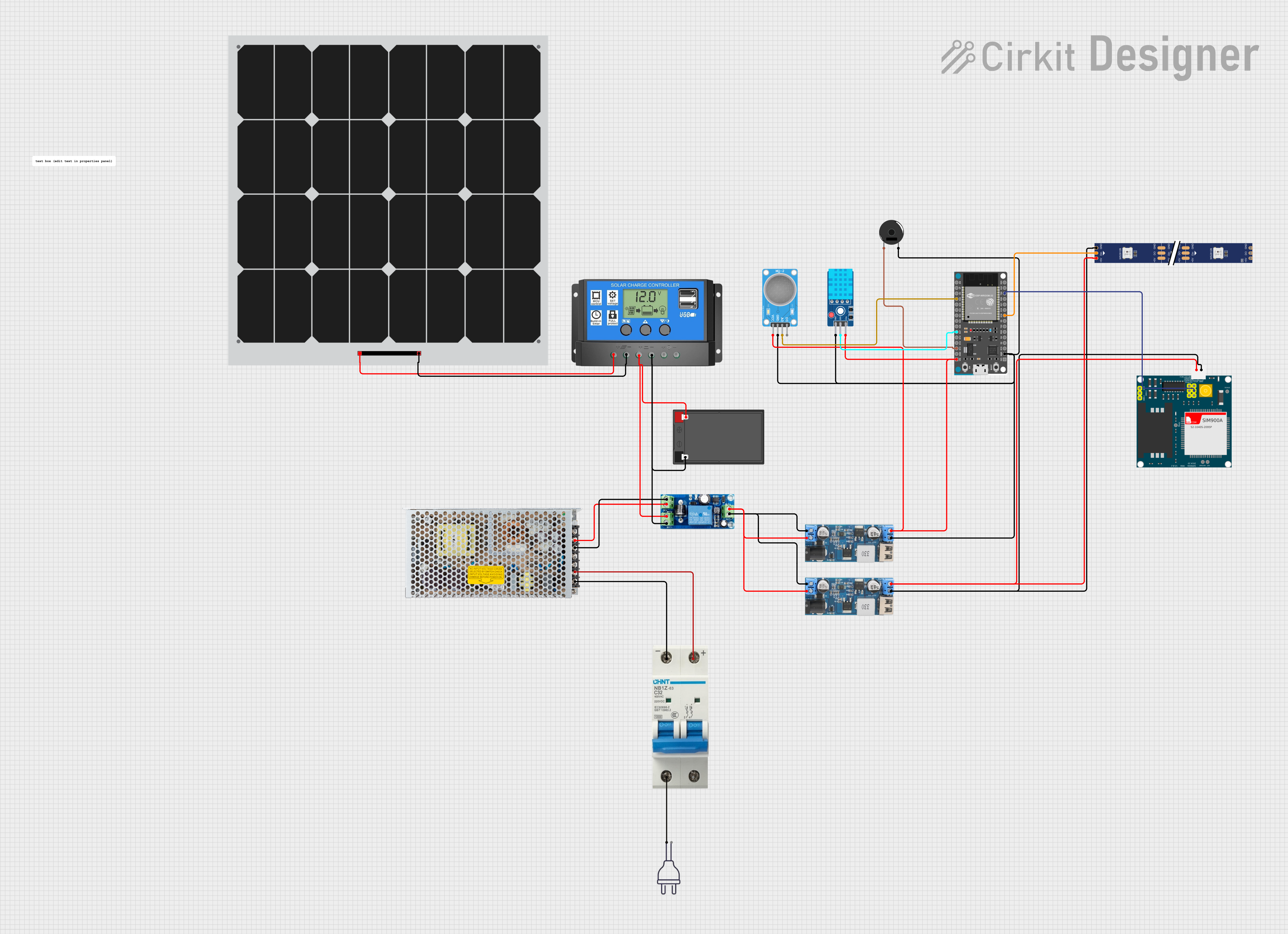
 Open Project in Cirkit Designer
Open Project in Cirkit DesignerExplore Projects Built with ESP32-C3-DevKitM-1

 Open Project in Cirkit Designer
Open Project in Cirkit Designer
 Open Project in Cirkit Designer
Open Project in Cirkit Designer
 Open Project in Cirkit Designer
Open Project in Cirkit Designer
 Open Project in Cirkit Designer
Open Project in Cirkit DesignerCommon Applications and Use Cases
- IoT devices and smart home automation
- Wireless sensor networks
- Wearable devices
- Industrial automation
- Prototyping for Wi-Fi and BLE-enabled applications
Technical Specifications
Key Technical Details
| Parameter | Value |
|---|---|
| Chipset | ESP32-C3 (RISC-V single-core processor) |
| Wireless Connectivity | Wi-Fi 802.11 b/g/n (2.4 GHz), BLE 5.0 |
| Flash Memory | 4 MB |
| Operating Voltage | 3.3 V |
| GPIO Pins | 21 (multipurpose, including ADC, PWM, etc.) |
| Interfaces | UART, SPI, I2C, I2S, GPIO, ADC |
| Power Supply | USB 5V or external 3.3V |
| Dimensions | 48.3 mm x 25.4 mm |
Pin Configuration and Descriptions
The ESP32-C3-DevKitM-1 features a total of 21 GPIO pins, which can be configured for various functions. Below is the pinout description:
| Pin Number | Pin Name | Functionality |
|---|---|---|
| 1 | GND | Ground |
| 2 | 3V3 | 3.3V Power Output |
| 3 | EN | Enable Pin (Active High) |
| 4 | IO0 | GPIO0, ADC, Boot Mode Selection |
| 5 | IO1 | GPIO1, ADC, UART TX |
| 6 | IO2 | GPIO2, ADC, UART RX |
| 7 | IO3 | GPIO3, ADC |
| 8 | IO4 | GPIO4, ADC, PWM |
| 9 | IO5 | GPIO5, ADC, PWM |
| 10 | IO6 | GPIO6, SPI CLK |
| 11 | IO7 | GPIO7, SPI MOSI |
| 12 | IO8 | GPIO8, SPI MISO |
| 13 | IO9 | GPIO9, I2C SDA |
| 14 | IO10 | GPIO10, I2C SCL |
| 15 | IO11 | GPIO11, UART TX |
| 16 | IO12 | GPIO12, UART RX |
| 17 | IO13 | GPIO13, PWM |
| 18 | IO14 | GPIO14, PWM |
| 19 | IO15 | GPIO15, ADC |
| 20 | IO16 | GPIO16, ADC |
| 21 | IO17 | GPIO17, ADC |
Usage Instructions
How to Use the ESP32-C3-DevKitM-1 in a Circuit
Powering the Board:
- Connect the board to a computer or USB power source using a USB-C cable.
- Alternatively, supply 3.3V to the 3V3 pin and connect GND to ground.
Programming the Board:
- Install the required drivers for the USB-to-serial interface (if needed).
- Use a compatible development environment such as Arduino IDE, ESP-IDF, or MicroPython.
- Select the correct board (e.g., "ESP32C3 Dev Module") and port in your IDE.
Connecting Peripherals:
- Use the GPIO pins to connect sensors, actuators, or other peripherals.
- Ensure that the voltage levels of connected devices are compatible with the 3.3V logic of the ESP32-C3.
Uploading Code:
- Write your code in the chosen IDE and upload it to the board.
- The board will automatically reset and run the uploaded program.
Important Considerations and Best Practices
- Voltage Levels: Ensure all connected peripherals operate at 3.3V logic levels to avoid damaging the board.
- Boot Mode: To enter bootloader mode, hold the IO0 pin low while resetting the board.
- Power Supply: Use a stable power source to avoid unexpected resets or malfunctions.
- Antenna Placement: Avoid placing metal objects near the onboard antenna to ensure optimal wireless performance.
Example Code for Arduino IDE
Below is an example of how to blink an LED connected to GPIO4:
// Define the GPIO pin for the LED
#define LED_PIN 4
void setup() {
// Set the LED pin as an output
pinMode(LED_PIN, OUTPUT);
}
void loop() {
// Turn the LED on
digitalWrite(LED_PIN, HIGH);
delay(1000); // Wait for 1 second
// Turn the LED off
digitalWrite(LED_PIN, LOW);
delay(1000); // Wait for 1 second
}
Troubleshooting and FAQs
Common Issues and Solutions
The board is not detected by the computer:
- Ensure the USB cable is functional and supports data transfer.
- Install the correct USB-to-serial drivers for your operating system.
Code upload fails:
- Check that the correct board and port are selected in the IDE.
- Ensure the board is in bootloader mode by holding IO0 low during reset.
Wi-Fi or Bluetooth is not working:
- Verify that the antenna area is not obstructed.
- Check your code for proper initialization of Wi-Fi or BLE.
The board resets unexpectedly:
- Ensure the power supply is stable and capable of providing sufficient current.
- Avoid short circuits or overloading the GPIO pins.
FAQs
Q: Can I power the board with a 5V supply?
A: Yes, you can power the board via the USB-C port with a 5V supply. However, if using the 3V3 pin, ensure the input voltage is exactly 3.3V.
Q: Does the board support deep sleep mode?
A: Yes, the ESP32-C3 chip supports deep sleep mode for low-power applications.
Q: Can I use the board with MicroPython?
A: Yes, the ESP32-C3-DevKitM-1 is compatible with MicroPython. You can flash the MicroPython firmware and use it for development.
Q: How do I reset the board?
A: Press the reset button on the board to restart it. Alternatively, you can power cycle the board.